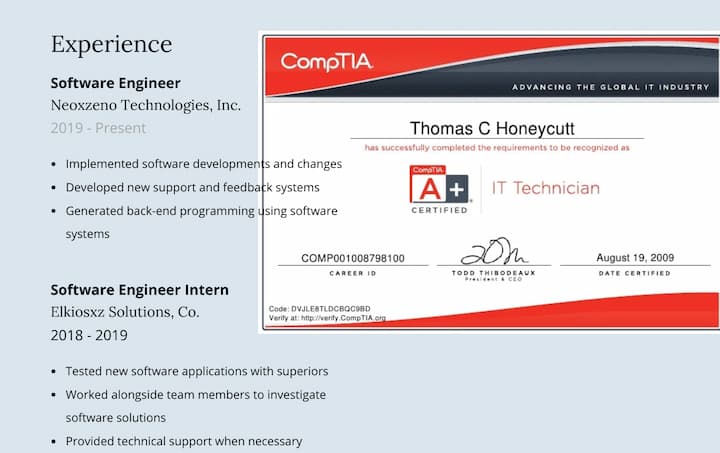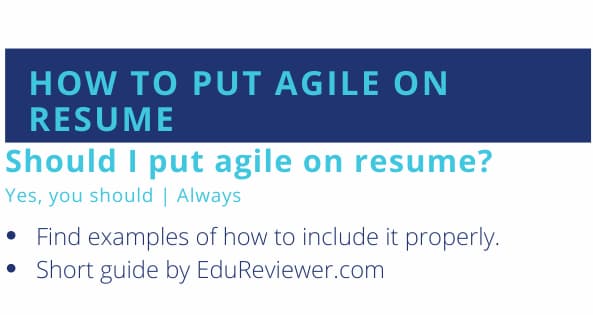In today’s job market, showcasing your skills effectively on a resume is essential, and data entry is no exception. Understanding how to list data entry on your resume can make a significant difference in capturing the attention of potential employers. This skill, often underestimated, is crucial in numerous fields for maintaining accuracy and efficiency in data management.
Whether you’re a seasoned data entry professional or looking to highlight this skill for the first time, this article offers clear, concise guidance on how to put data entry on your resume effectively.
Additionally, we’ve got you covered on other specialized skills, including how to put SQL in a resume and how to list your experience as a resident assistant. By following our straightforward tips, you can ensure your resume stands out in a competitive job landscape. Keep reading to discover key strategies that will help you shine in your next job application!
Should I Put CPR on Resume?
When you decide whether to put CPR certification on your resume depends on the job you’re applying for. If the position requires health and safety skills, or if you’re in a field like healthcare, education, or childcare, including your CPR certification is highly beneficial. It demonstrates your preparedness for emergency situations, a valuable skill in any workplace.
However, even for jobs where CPR isn’t a direct requirement, this certification can still be an asset. It reflects your ability to handle stressful situations and your commitment to team safety.
Incorporate this certification into your resume should be done thoughtfully. Place it under a ‘Skills’ or ‘Certifications’ section, ensuring it complements your other qualifications. For example, if you’re also showcasing how to add data entry to your resume, make sure your CPR certification doesn’t overshadow your primary skills relevant to the job.
Moreover, as part of creating a comprehensive professional profile, consider how to put LinkedIn on your resume. This not only broadens your appeal to potential employers but also provides them with a more detailed view of your professional background and skills. Balancing your unique skill set is key to crafting a resume that stands out.
Where to Put Data Entry on Resume
When you determine where to put data entry on your resume is crucial for highlighting this valuable skill. Typically, data entry expertise should be prominently displayed in the ‘Skills’ section of your resume. This placement immediately alerts potential employers to your proficiency in this area. In the ‘Skills’ section, succinctly list your data entry abilities, such as typing speed, accuracy rate, and familiarity with specific data entry software.
It’s also effective to integrate your data entry experience into the ‘Work Experience’ section. Here, you can detail how you’ve applied these skills in previous roles, emphasizing achievements like increasing data processing efficiency or reducing errors.
Furthermore, for those transitioning from military to civilian careers or seeking federal employment, tailoring your resume to highlight transferable skills is key. In this context, mentioning data entry skills can be particularly good.
How to Add CPR to Resume
When you add CPR certification to your resume can significantly enhance your job application, especially if you’re targeting roles in healthcare, education, or other fields where safety and emergency skills are valued. Here’s how to do it effectively:
- Choose the Right Section. Typically, CPR certification should be listed in a ‘Certifications’ or ‘Skills’ section. If you don’t have a separate section for certifications, you can include it under ‘Education’ as well.
- Provide Specific Details. Mention the certifying organization (e.g., American Heart Association), the date of certification, and the expiry date if applicable. This shows employers that your certification is current.
Example:
– CPR Certified, American Heart Association, Expires: August 2025
- Contextualize It with Relevant Skills. If you’re also explaining how to write data entry on a resume, ensure that your CPR certification complements these skills. For example, you might highlight your attention to detail in both data entry and emergency situations.
- Tailor It to the Job Description. If the job listing specifically mentions or implies the importance of CPR or emergency response skills, make sure it’s prominently displayed on your resume.
- Quantify Your Experience. If you’ve used your CPR skills in a professional setting, mention this. For instance, “Applied CPR training in a school setting, ensuring the safety of over 300 students.”
- Highlight Transferable Skills. CPR certification can also imply qualities like quick decision-making, calmness under pressure, and a commitment to health and safety. These are attractive in any job.
- Use the Right Keywords. For automated resume scanners, use keywords related to CPR and emergency response. This ensures your resume passes through initial screenings, especially for larger organizations.
Example:
– Keywords: “CPR Certified,” “Emergency Response Trained,” “First Aid Skills”
Link to Real-Life Scenarios. If you have real-life examples where you applied CPR, briefly mention these to demonstrate practical experience.
Example:
– “Successfully administered CPR in a community event, aiding in a critical emergency situation”
Combine with Related Certifications. If you have other relevant certifications like First Aid or AED (Automated External Defibrillator) training, list them alongside your CPR certification to show a broader skill set.
Example:
– First Aid and CPR Certified, Red Cross, Expires: June 2024
– AED Training Completed, American Heart Association, Expires: June 2024
Mention Renewal Plans. If your certification is nearing expiration, note your plans to renew it. This shows commitment to maintaining your skills.
Example:
– CPR Certified (renewal scheduled for July 2023)
- Emphasize Soft Skills. CPR certification can also highlight your soft skills. Mention qualities like leadership, responsibility, and the ability to stay calm under pressure.
- Format for Clarity. Use bullet points or a separate line for certifications to make them easy to spot. Avoid burying this information in large blocks of text.
Example:
– Certifications:
– CPR Certified – American Heart Association
– First Aid Certified – Red Cross
- Connect to Your Career Objective. If your career objective aligns with health, safety, or caregiving roles, mention how your CPR certification supports your career goals.
- Match with Job Requirements. In roles emphasizing health and safety, like construction or manufacturing, align your CPR certification with specific job safety requirements to demonstrate your preparedness. Similarly, when explaining how to put resident assistant on a resume, tailor your experience to meet the job’s demands, showcasing your versatile skill set.
Sample CPR Resume
Career change can be a daunting but rewarding journey. A well-crafted resume is crucial in highlighting your skills and experiences that transfer across different industries. This sample resume demonstrates how to effectively include CPR certification, a valuable asset in many fields, especially healthcare.
CPR Resume Example:
John Doe
1234 Maple Street, Anytown, USA
Phone: (123) 456-7890
Email: [email protected]
LinkedIn: linkedin.com/in/johndoe
Objective:
Dedicated and reliable individual seeking a position in a healthcare setting where I can apply my CPR certification and data entry skills to effectively support patient care and administrative tasks.
Skills:
- CPR Certified (American Heart Association, Expires: May 2024)
- Proficient in data entry with a typing speed of 75 WPM
- Experienced in Microsoft Office Suite (Word, Excel, Outlook)
- Strong attention to detail and accuracy
- Excellent communication and teamwork abilities
Certifications:
- CPR and First Aid Certified, American Red Cross (Expires: June 2024)
- AED (Automated External Defibrillator) Training Completed, American Heart Association (Expires: June 2024)
- Work Experience:
- Administrative Assistant
- ABC Healthcare, Anytown, USA | June 2019 – Present
- Managed data entry for patient records, maintaining a 99% accuracy rate
- Administered first aid and CPR during two emergency situations, effectively providing immediate care
- Coordinated with healthcare professionals to ensure efficient office operations
- Assisted in organizing and managing health and safety protocols
- Education:
- Bachelor of Science in Health Administration
- State University, Anytown, USA | Graduated May 2019
FAQ
How do I describe my data entry on a resume?
Highlight your typing speed, accuracy rate, software proficiency (e.g., Excel, SQL), and experience with specific data management tasks.
Example: “Proficient in high-speed data entry (80 WPM), maintaining 99% accuracy across various data management systems.”
How do you write a data entry description?
Detail your responsibilities, such as managing large databases, inputting and updating data, and ensuring data integrity.
Example: “Responsible for inputting and maintaining up-to-date records in a high-volume corporate environment.”
How do you write data skills on a resume?
List specific data-related skills, including software competencies (like Excel and Tableau), data analysis, visualization, and database management.
Example: “Skilled in Excel for data organization, Tableau for visualization, and proficient in database management.”
How can I describe myself in data entry?
Emphasize your efficiency, attention to detail, and ability to manage large sets of data accurately and quickly.
Example: “Detail-oriented data entry specialist adept at processing high volumes of data with utmost accuracy and efficiency.”




